Click on images to enlarge
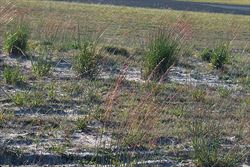
infestation (Photo: Jackie Miles and Max Campbell)
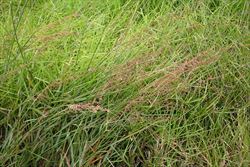
habit (Photo: Sheldon Navie)
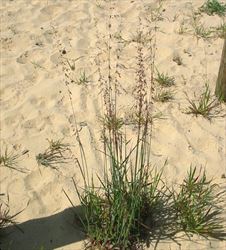
habit (Photo: Sheldon Navie)
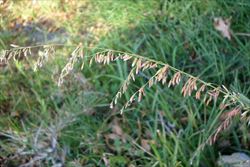
seed-head with drooping branches (Photo: Sheldon Navie)
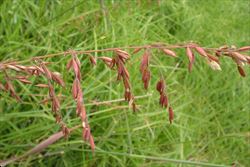
close-up of the reddish-coloured flower spikelets (Photo: Sheldon Navie)
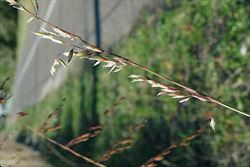
mature seed-head (Photo: Jackie Miles and Max Campbell)
Scientific Name
Ehrharta calycina Sm.
Family
Gramineae (South Australia)Poaceae (Queensland, New South Wales, the ACT, Victoria, Tasmania, Western Australia and the Northern Territory)
Common Names
ehrharta, perennial veld grass, perennial veldt grass, perennial veldtgrass, veldt grass, vedltgrass
Origin
Native to southern Africa (i.e. southern Namibia, Lesotho and South Africa).
Naturalised Distribution
Naturalised in many parts of southern Australia (i.e. in southern and eastern New South Wales, Victoria, Tasmania, the ACT, many parts of South Australia, and western and southern Western Australia).
Also naturalised overseas in southern USA (i.e. California and Texas), New Zealand and Hawaii.
Notes
This species is regarded as an environmental weed in Western Australia, South Australia and Victoria and is actively managed by community groups in Western Australia. Perennial veldtgrass (Ehrharta calycina) is a major problem because it replaces native plants and in its dry dormant state it creates a fire hazard and increases fire frequency.
In Western Australia, perennial veldtgrass (Ehrharta calycina) is a widespread weed of roadsides and open woodlands on sandy soils from Geraldton to Esperance, and it is especially common on the Swan Coastal Plain in the south-western parts of the state. It is also a common weed along waterways and in wetlands in the southern parts of Western Australia. In these areas it replaces native sedges and grasses in seasonally dry wetlands and in the adjacent dry upland areas surrounding wetlands and waterways.
Perennial veldtgrass (Ehrharta calycina) is also regarded as being invasive in south-eastern South Australia and is listed as a common environmental weed in the Adelaide Hills Council district. It is one of the top five environmental weeds threatening biodiversity on Kangaroo Island, and is regarded as a direct threat to the survival of the endangered Kangaroo Island phebalium (Leionema equestre subsp. phebalioides).
Sandy areas and coastal dunes in south-western USA are also thought to be susceptible to invasion by perennial veldtgrass (Ehrharta calycina). For example, it has been observed to rapidly change the composition and dynamics of invaded coastal dune systems in California. Shrublands that are invaded by this species are also transformed into non-native grasslands. Perennial veldtgrass (Ehrharta calycina) does this by suppressing shrub seedling germination and causing more fires, which further encourages the invasion of this species through a positive feedback loop. It is also a weed of sand dunes, sparse pastures, sandy roadsides and forestry plantations in New Zealand.

